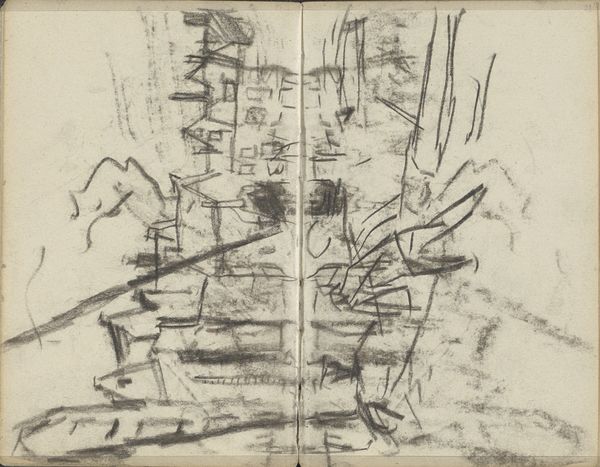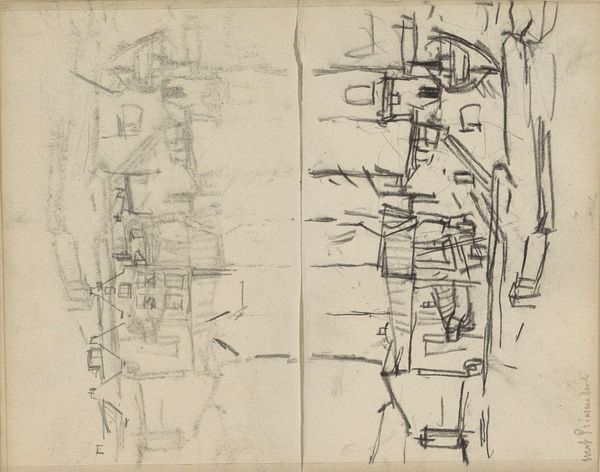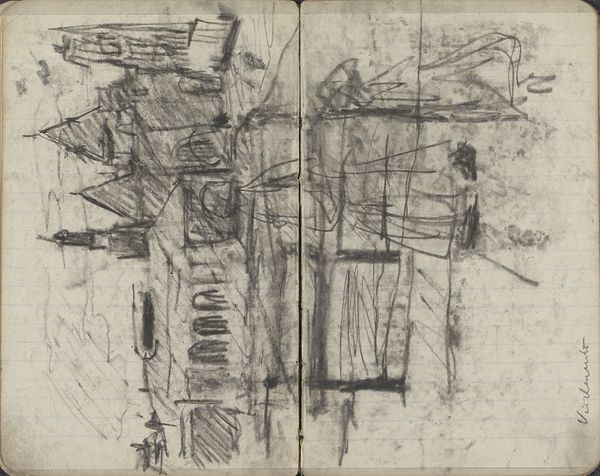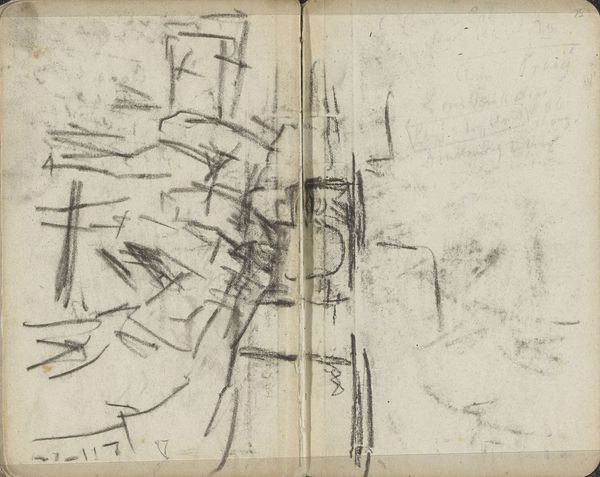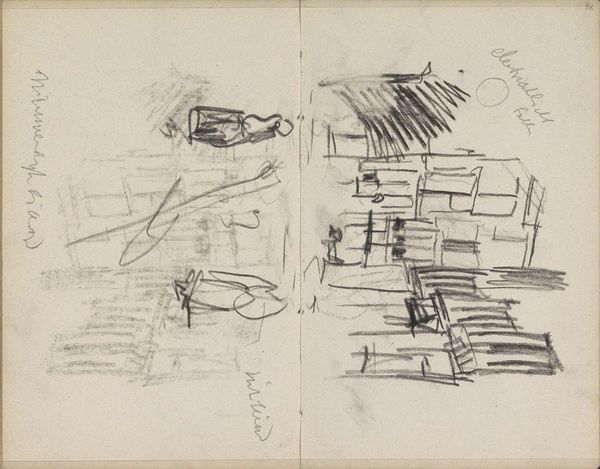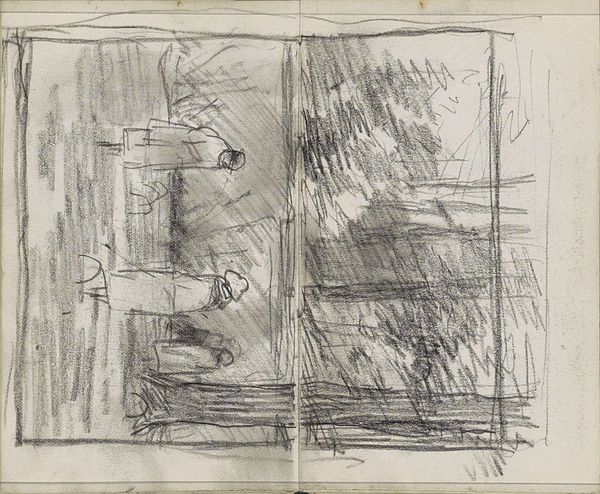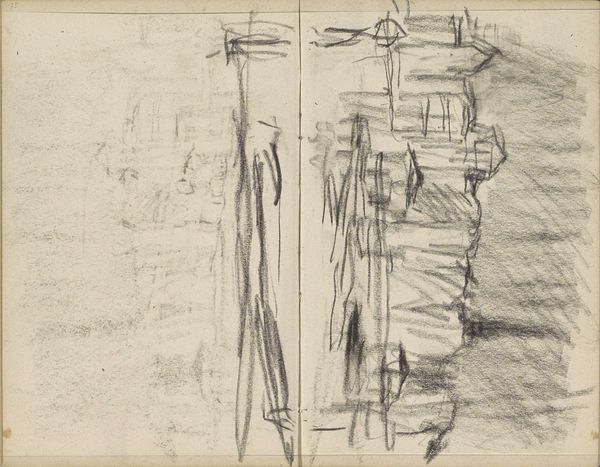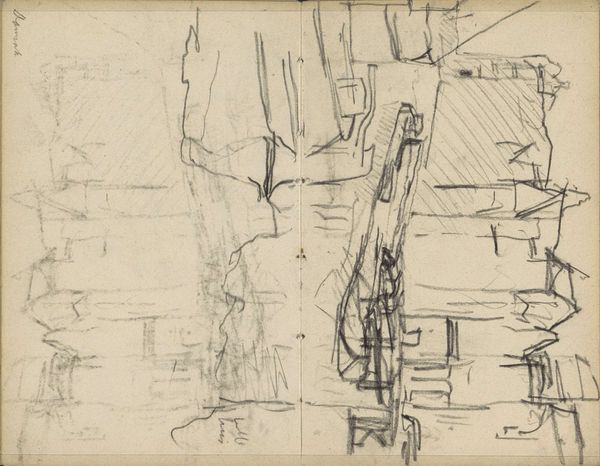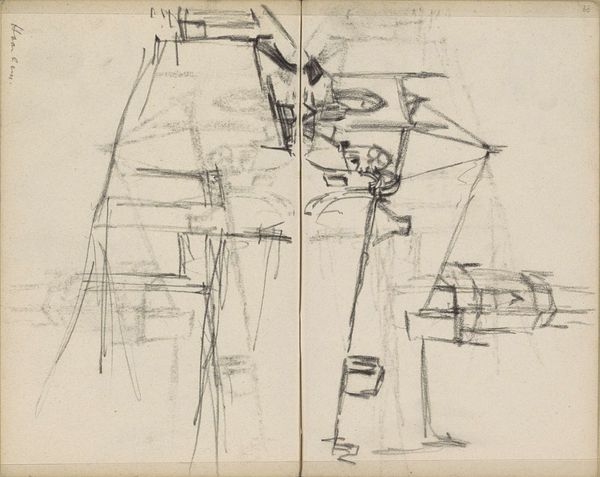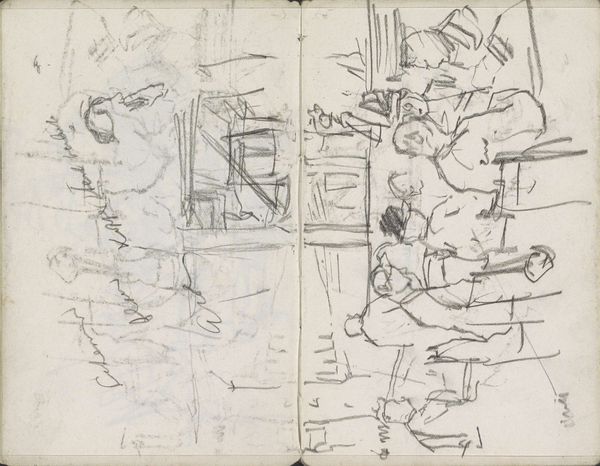
Afbraak van de Korte Reguliersdwarsstraat in Amsterdam ter hoogte van het Thorbeckeplein 1910
0:00
0:00
Copyright: Rijks Museum: Open Domain
George Hendrik Breitner sketched the "Demolition of the Korte Reguliersdwarsstraat in Amsterdam near Thorbeckeplein" in charcoal on paper. Here, the destruction of buildings embodies the relentless march of time. The act of demolition is an act of transformation. Breitner captures not merely the destruction but the sense of transition, a fleeting moment pregnant with historical weight, not unlike the tradition of the 'vanitas' still life, the moment of the skull. The image shares a visual echo with the ruins found in Piranesi's etchings of ancient Rome. Where Piranesi evokes a sense of melancholy grandeur, Breitner finds a similar pathos in the destruction of the familiar. Consider how the image, in both instances, stirs subconscious anxieties about decay and the ephemeral nature of human achievement. In this modern interpretation, Breitner taps into the collective memory of decline. It’s a potent reminder of the cyclical nature of history, ever in motion.
Comments
No comments
Be the first to comment and join the conversation on the ultimate creative platform.
